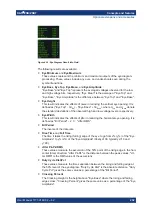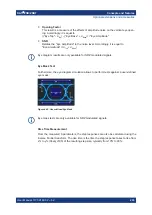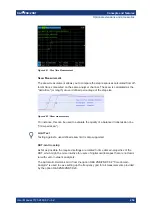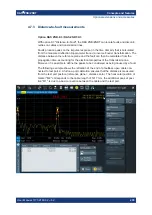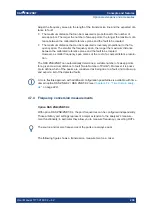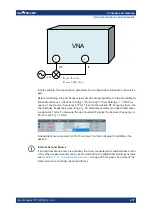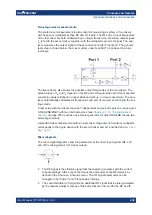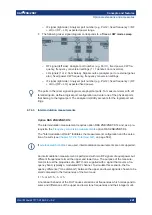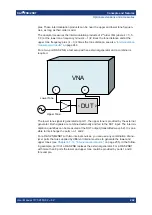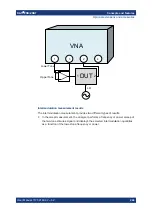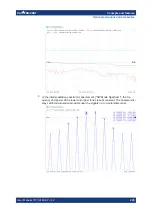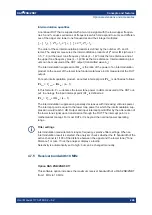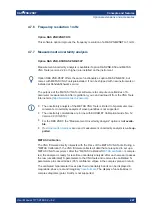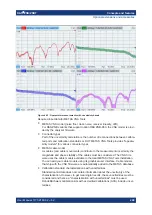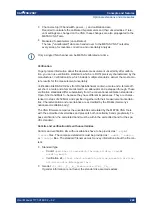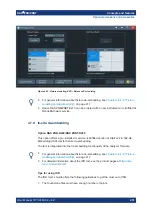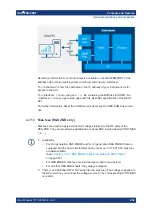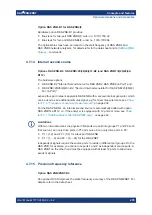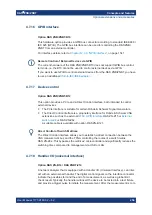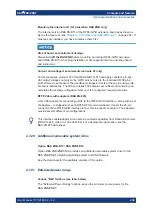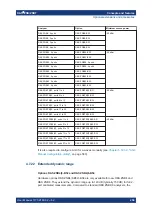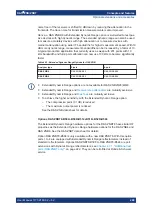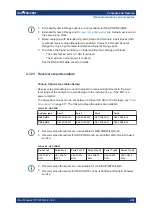
Concepts and features
R&S
®
ZNB/ZNBT
246
User Manual 1173.9163.02 ─ 62
Intermodulation quantities
A nonlinear DUT that is supplied with a two-tone signal with the lower/upper frequen-
cies f
L
and f
U
causes emissions at frequencies which correspond to sums and differen-
ces of the upper and lower tone frequencies and their integer multiples:
f
U
– f
L
, f
U
+ f
L
, 2*f
U
– f
L
, 2*f
U
+ f
L
, f
U
+ 2*f
L
, 2*f
L
– f
U
...
The order of these intermodulation products is defined by the number of f
L
and f
U
terms. The analyzer measures the intermodulation products of k
th
order IMk (where k =
3, 5, 7, 9) at the lower tone frequency minus (k – 1)/2 times the tone distance and at
the upper tone frequency plus (k – 1)/2 times the tone distance. Intermodulation prod-
ucts can be measured at the DUT output (transmitted wave b
n
).
The intermodulation suppression IMk
rel
is the ratio of the power of an intermodulation
product to the power of the lower tone fundamental wave in dB, measured at the DUT
output.
For each intermodulation product, an output intercept point IPk
out
is defined as follows:
IPk
out
= P
L, out
+ IMk
rel
/ (k – 1)
In this formula, P
L, out
denotes the lower tone power in dBm, measured at the DUT out-
put. In analogy, the input intercept point IPk
in
is defined as:
IPk
in
= P
L, in
+ IMk
rel
/ (k – 1)
The intermodulation suppression generally decreases with increasing stimulus power.
The intercept point is equal to the lower tone power for which the intermodulation sup-
pression would reach 0 dB. Output and input intercept point differ by the attenuation of
the lower tone signal upon transmission through the DUT. The intercept point is a
mathematical concept. For most DUTs, it is beyond the nominal power operating
range.
Filter settings
Intermodulation measurements require frequency-selective filter settings. When an
intermodulation result is selected, the analyzer checks whether the IF bandwidth of the
active channel is 1/100 of the distance between the upper and the lower tone ("Tone
Distance") or less. If not, the analyzer displays a tooltip.
Selectivity is automatically set to high, but can be changed manually.
4.7.5
Receiver bandwidth 10
MHz
Option R&S
ZNB/ZNBT-K17
This software option increases the maximum receiver bandwidth of a R&S
ZNB/ZNBT
from 1
MHz to 10
MHz.
Optional extensions and accessories

